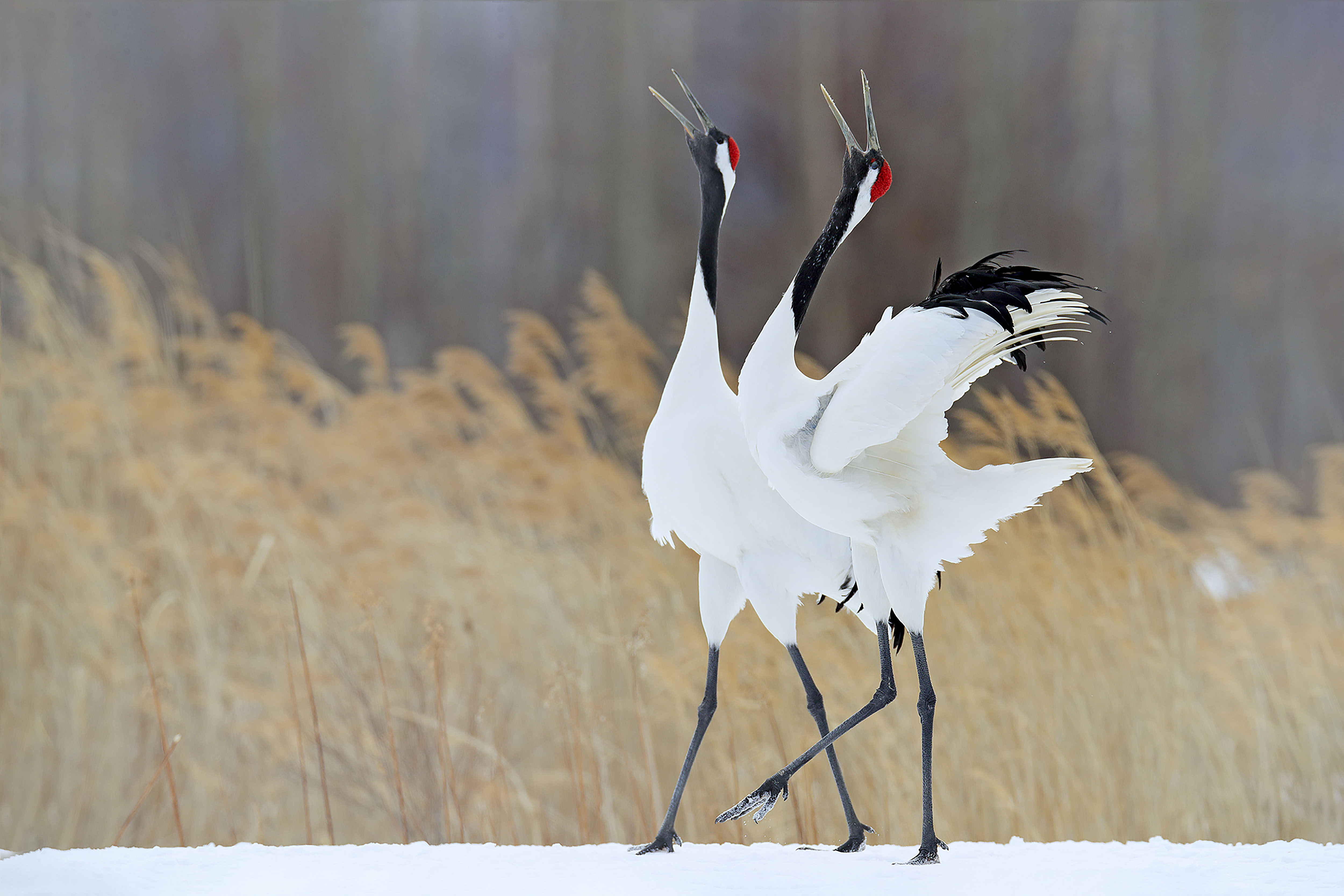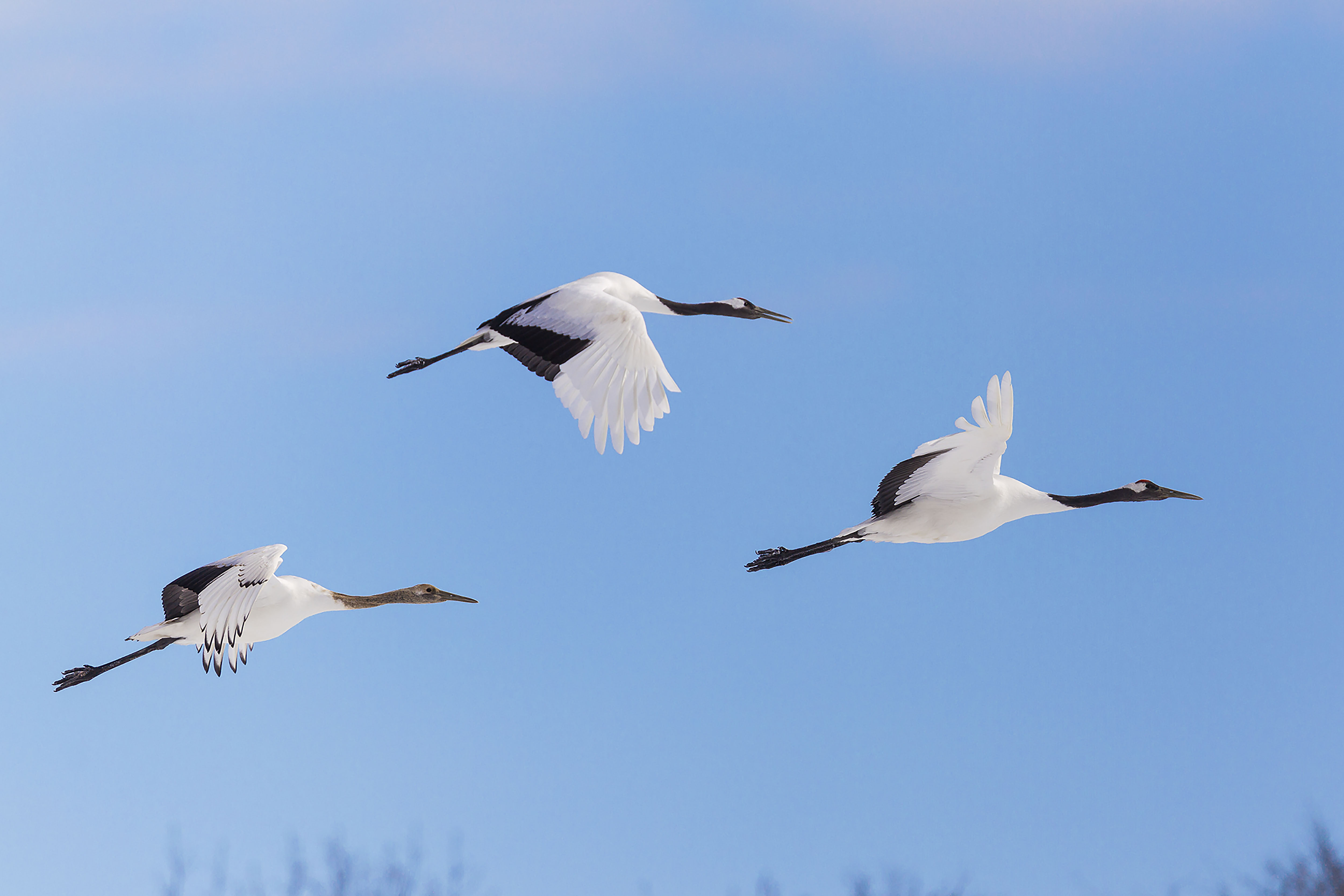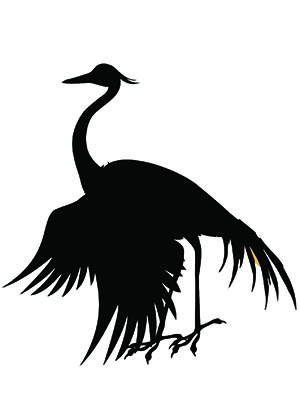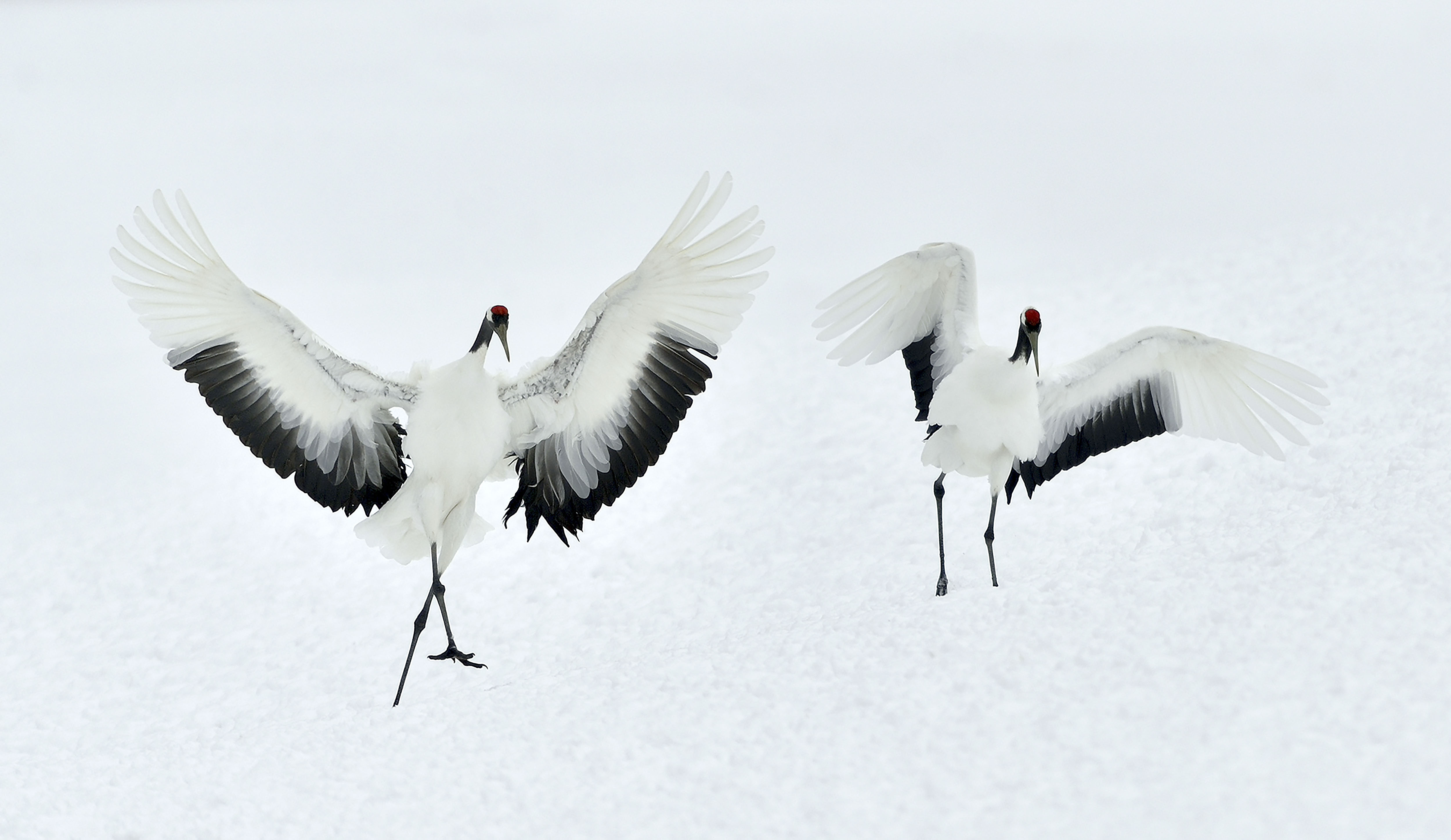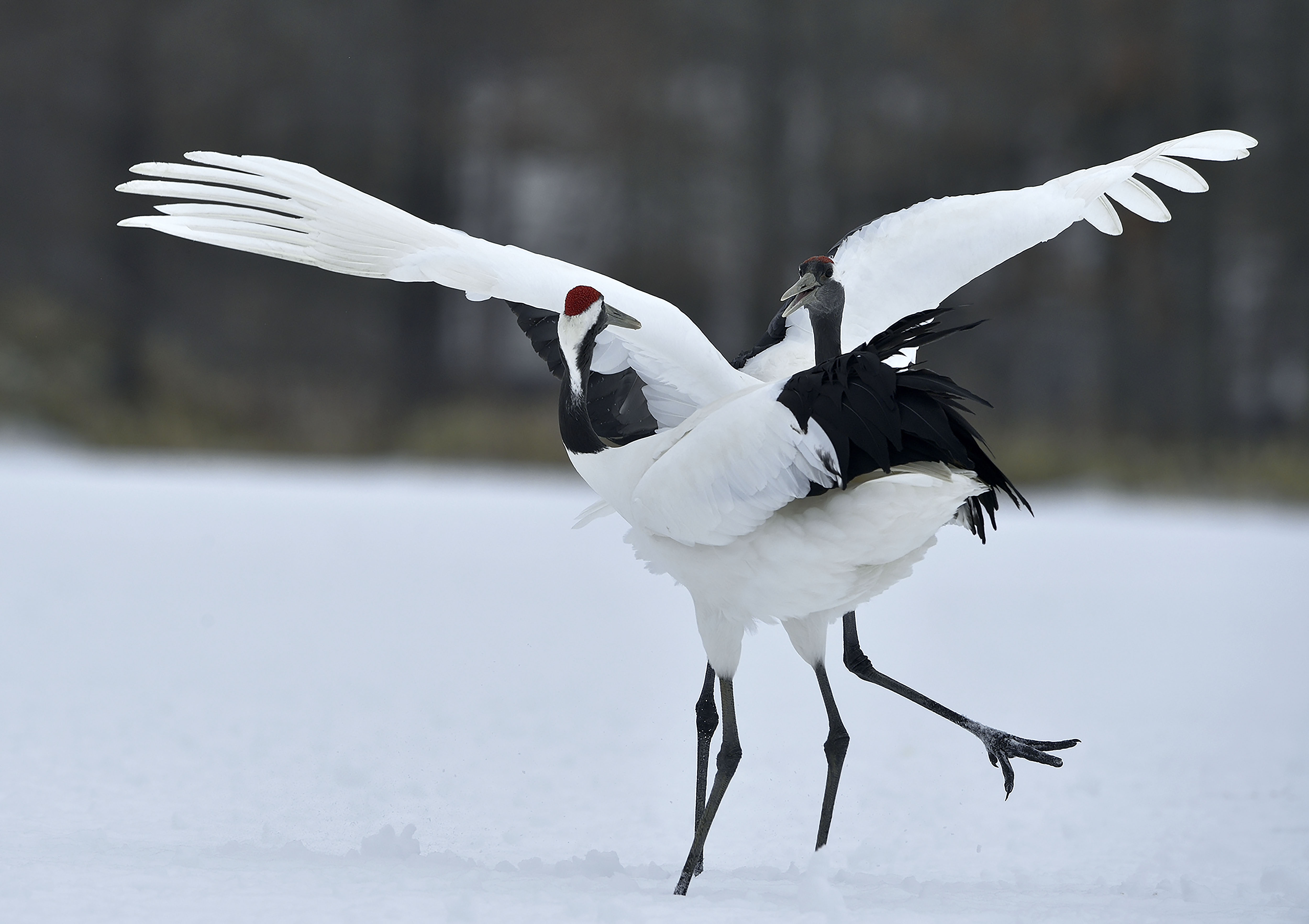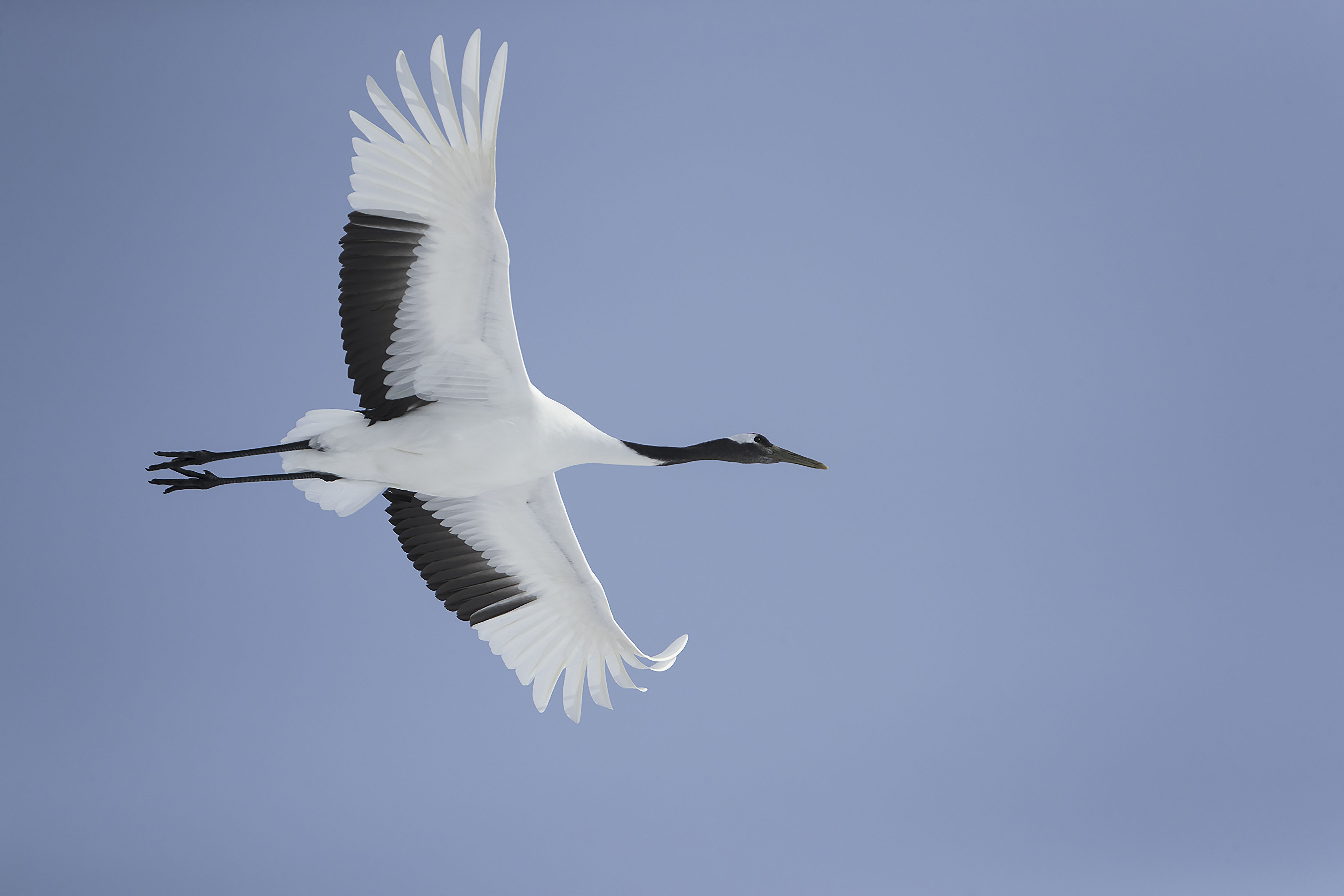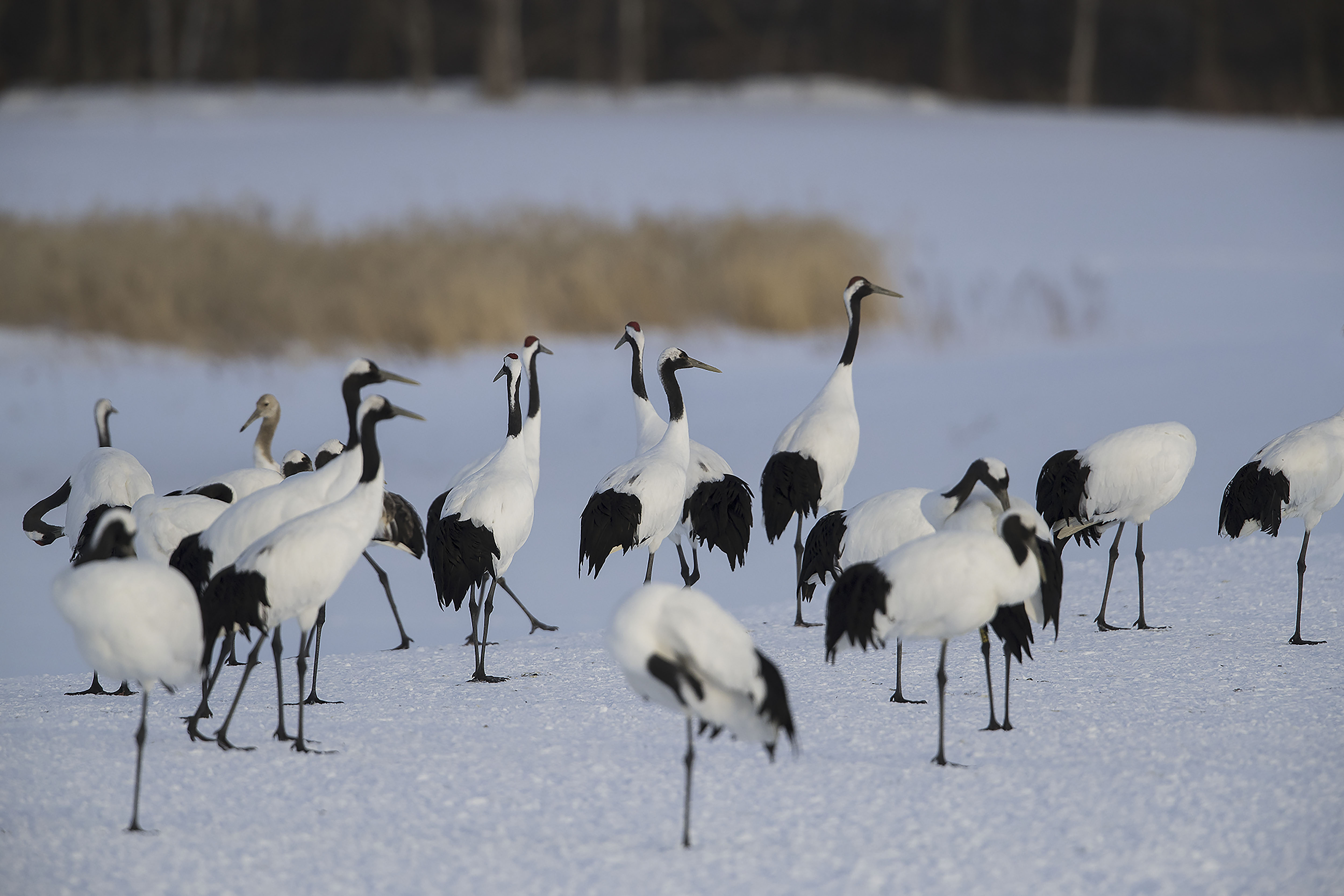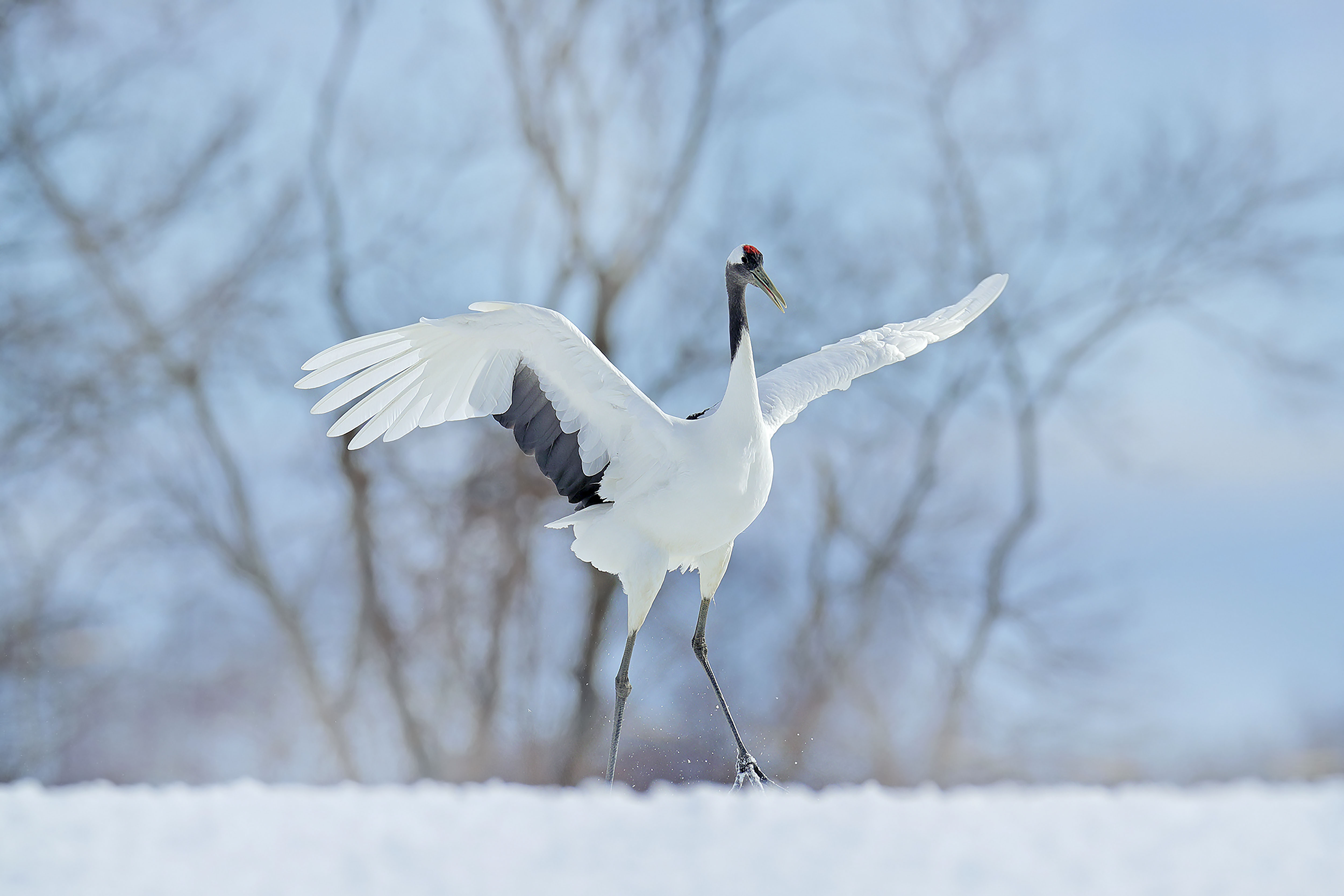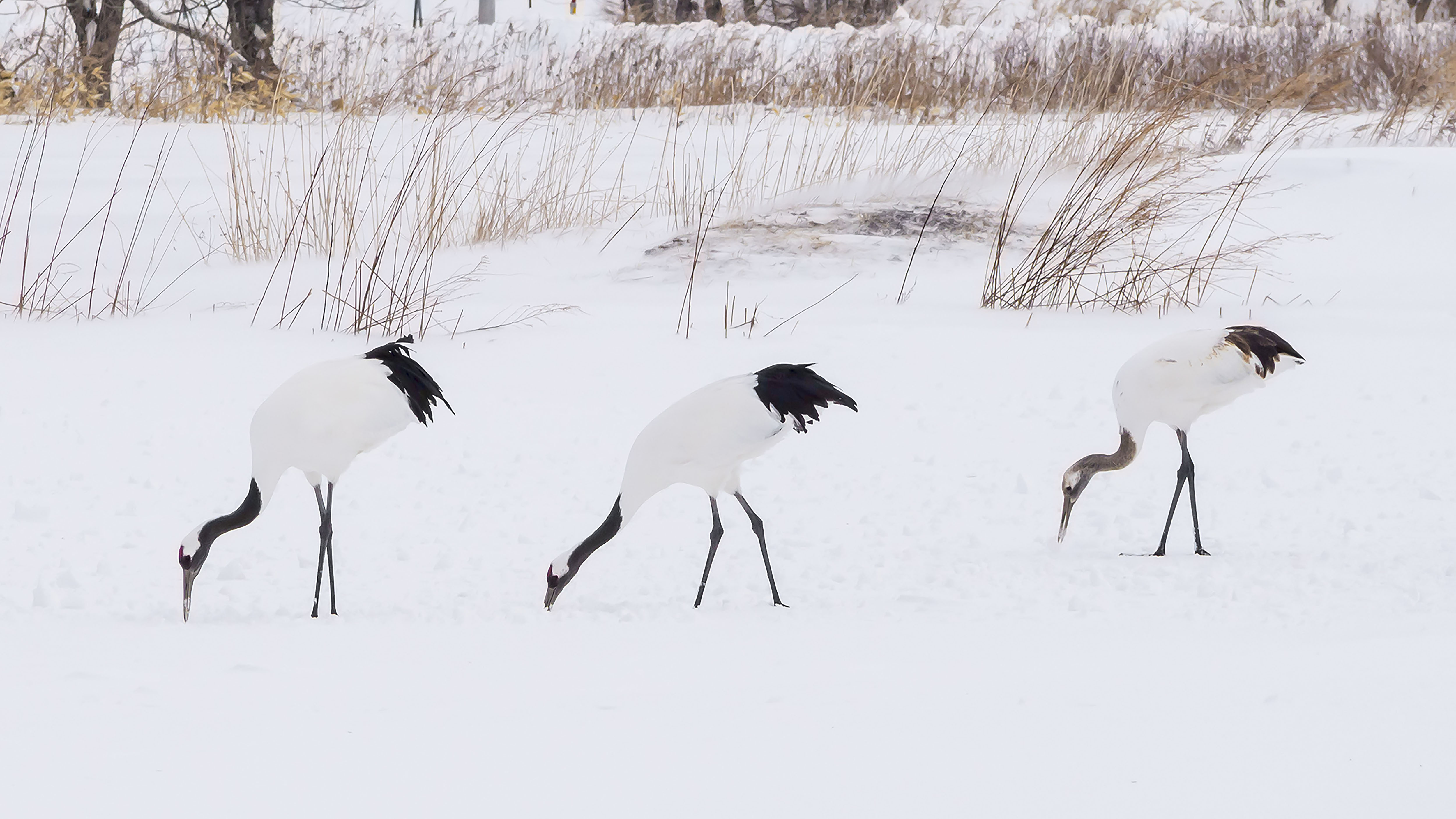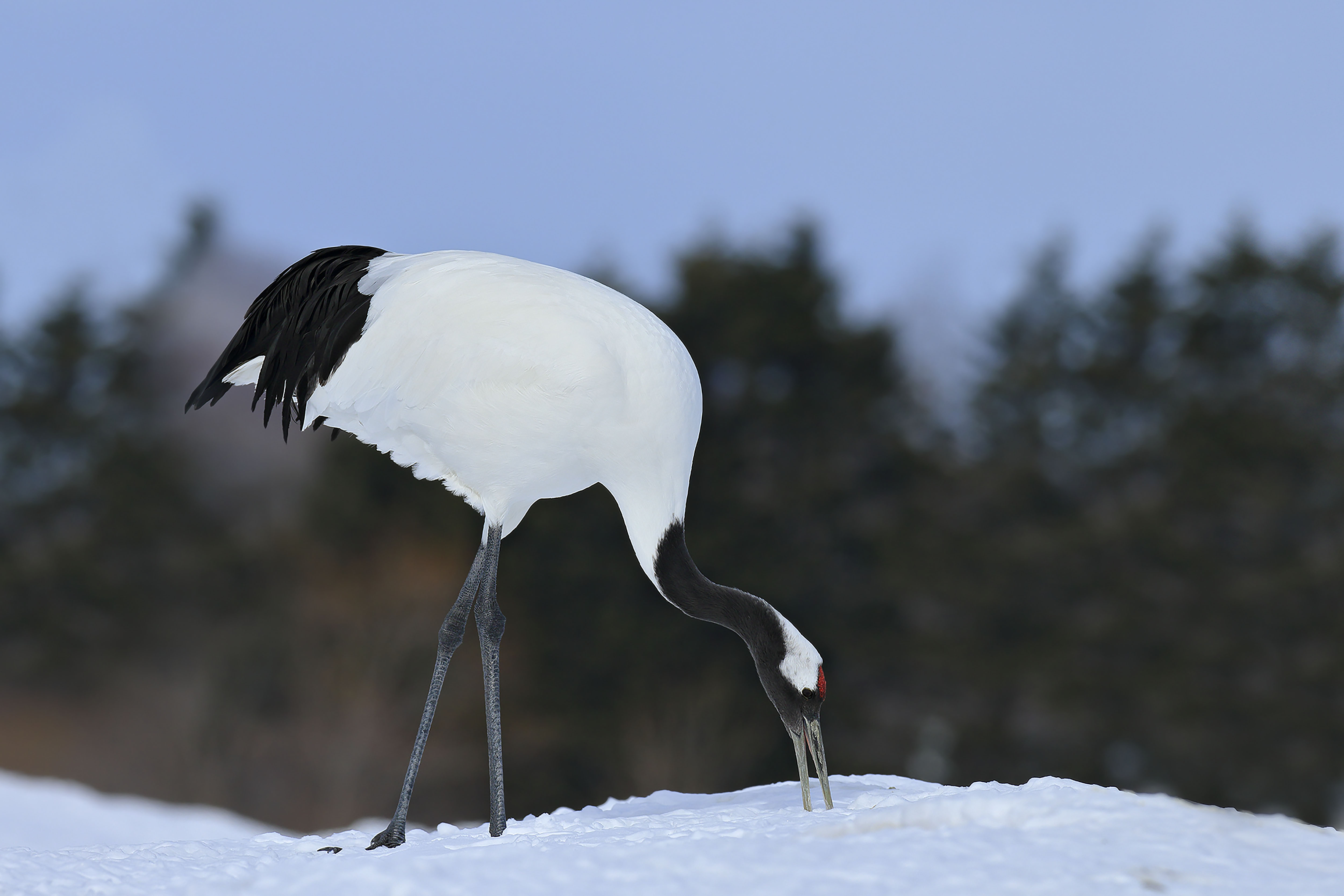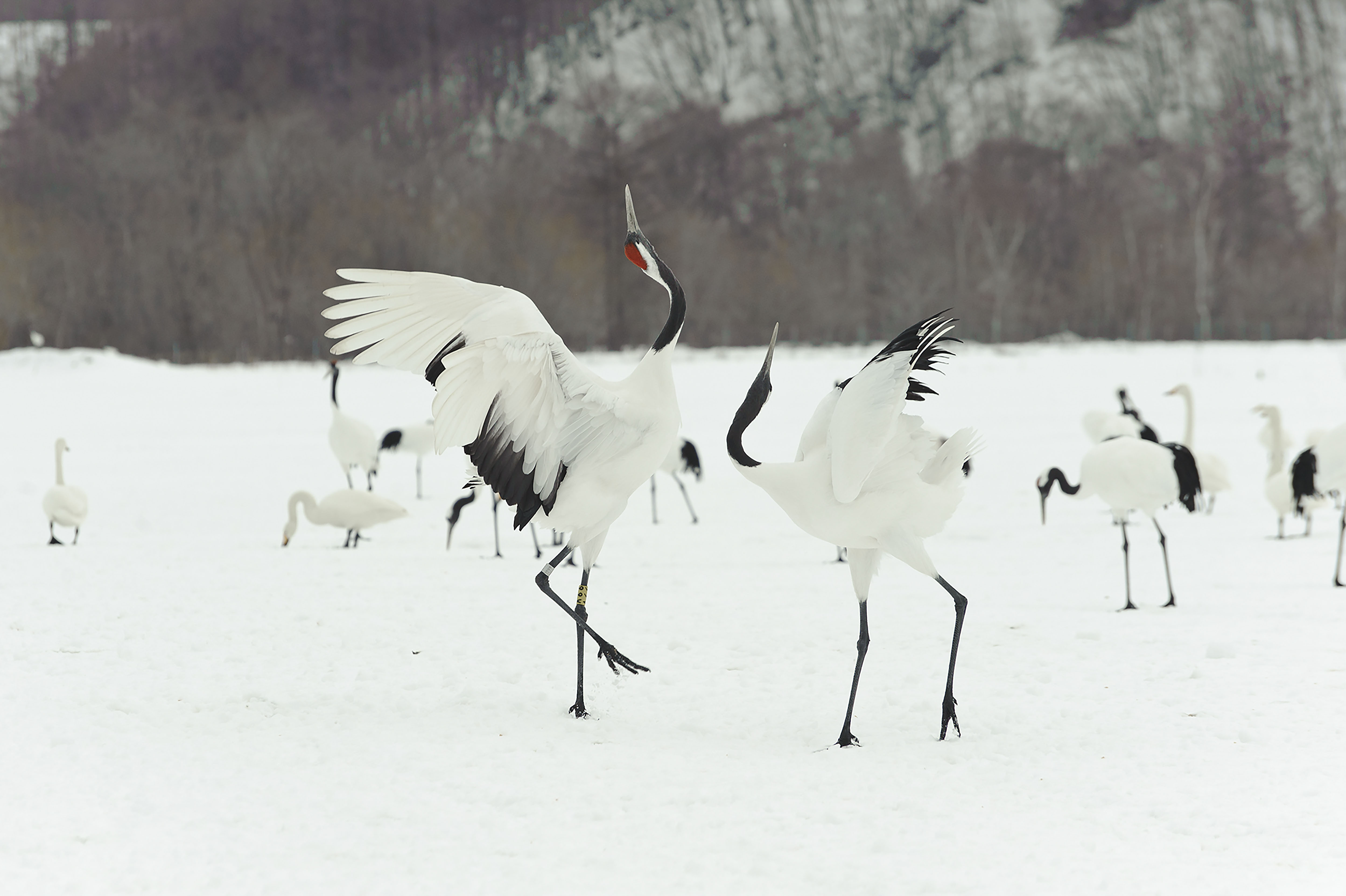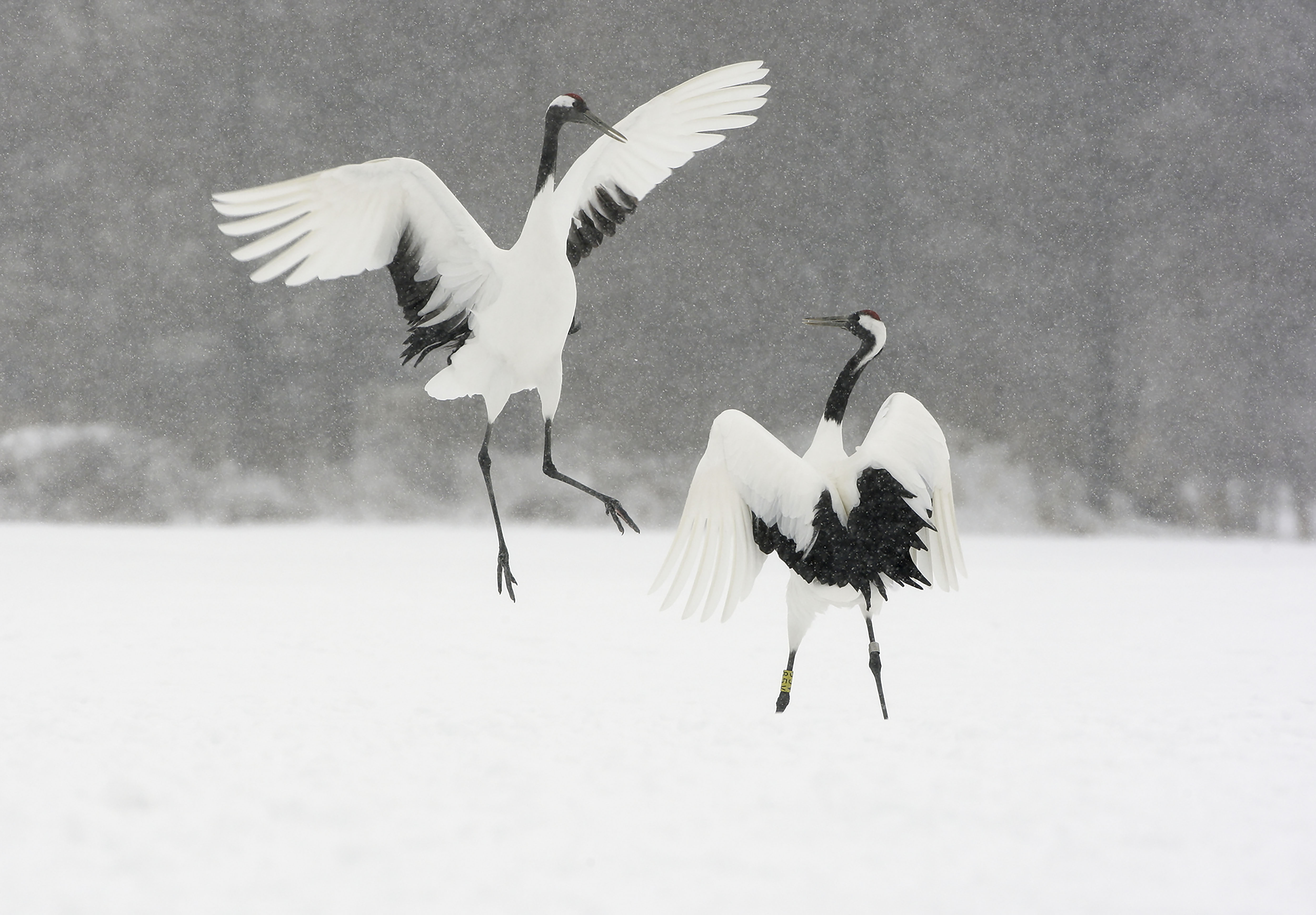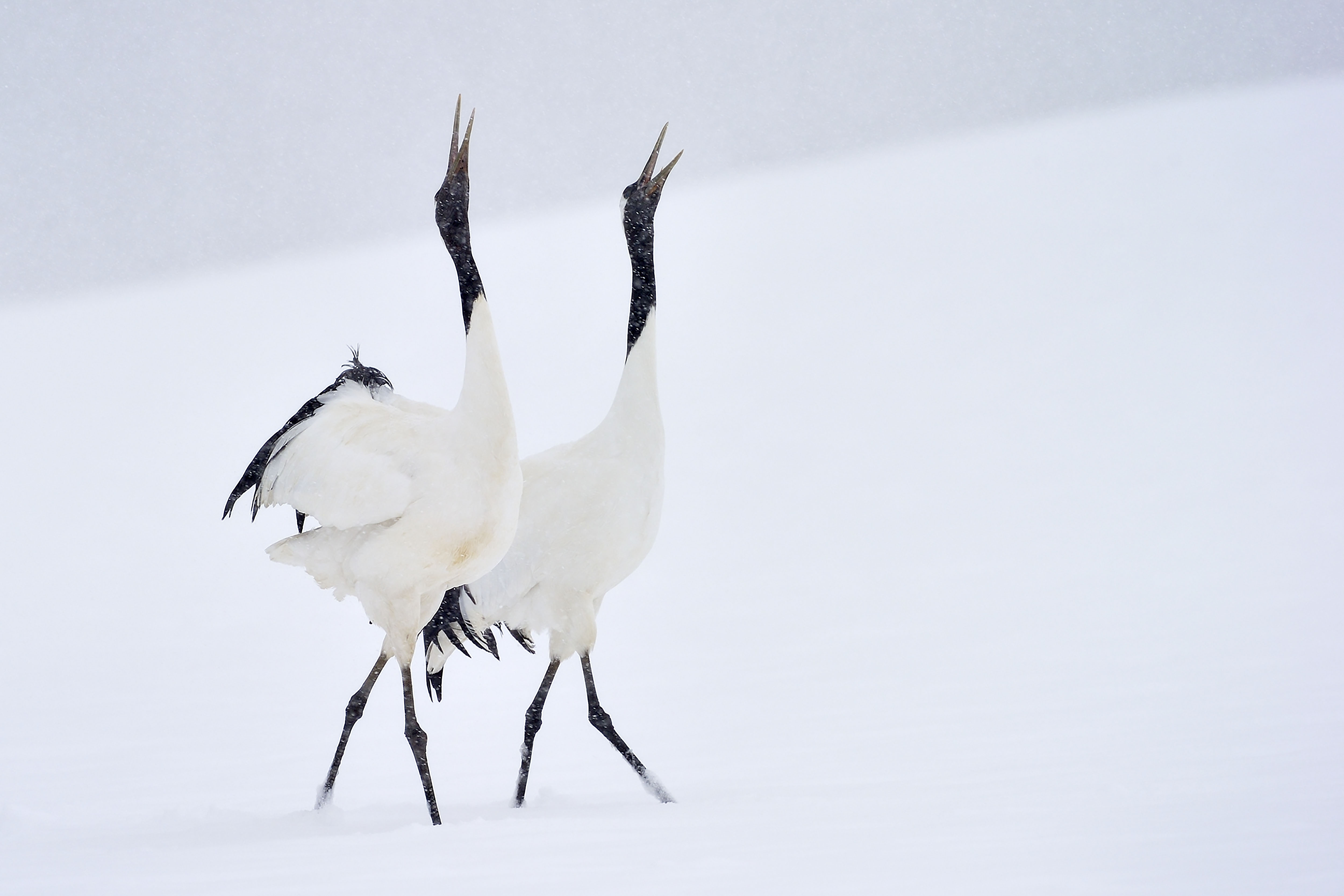Red-Crowned Crane
(Grus japonensis)
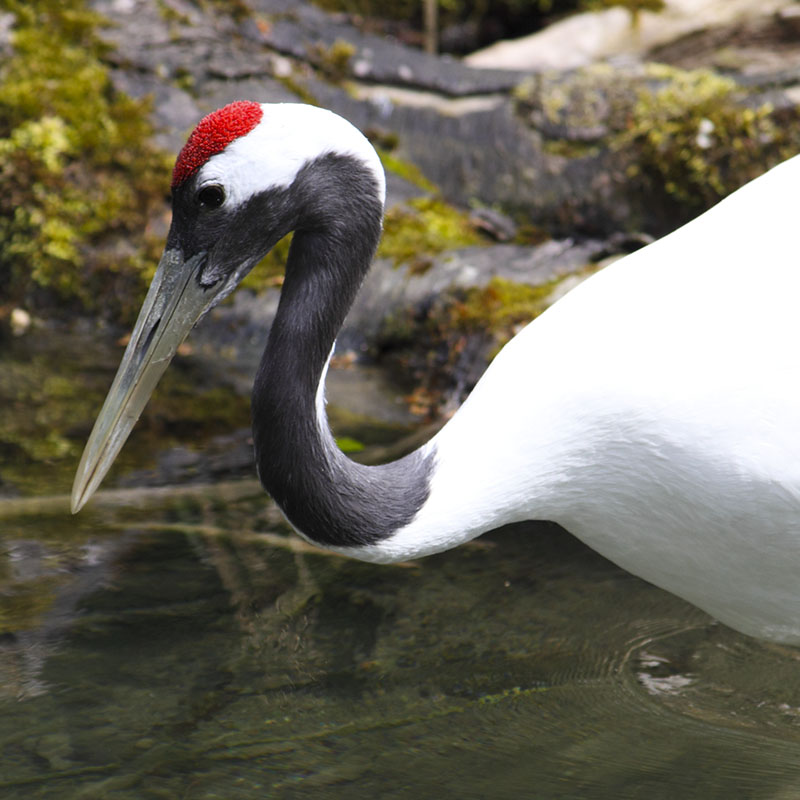
Russian Far East Broadleaf and Mixed Forests
STATISTICS
Height up to
1.6 meters
Weight up to
9.5 kgs
Lifespan
30 years
Wingspan
2.4 meters
Migratory - Territorial - Terrestrial - Social
The Red-crowned Crane, named for the patch of red bare skin on its crown, is amongst the largest, heaviest and rarest cranes in the world. In some places, it is even considered a symbol of luck, longevity and fidelity.
For example, in China, the bird is often featured in myths and legends associated with themes such as immortality. It was even considered as the country’s candidate for national animal. Furthermore, in Japan, the Red-crowned Crane is said to live for 1,000 years, and is the official symbol of Japan Airlines.
This iconic crane tends to nest in wetlands and rivers, feeding on aquatic invertebrates and, in some instances, rice from nearby paddy fields. Its extremely sharp beak allows it to spear its prey. It lives in flocks and is highly social, spending much of its time preening by secreting an oil from the top of its tail to keep its feathers waterproof.
It is highly migratory and tends to be quite territorial. During breeding season, the Red-crowned Crane has a courtship dance consisting of a series of bows, head-bopping and jumps. Pairs are monogamous and the females lays two eggs but most often, only one survives.
BIODIVERSITY BENEFIT
Population Control
THREATS
Habitat Loss
Degradation of wetlands due to industrial and economic development.
Dams
The proliferation of dams that lower water levels and expose nests to predation.
Poaching
Poaching of cranes and their eggs for captive trade.
Disease
Risk of disease due to low genetic diversity.
Human - Animal Conflict
Human disturbance and poisoning.
PROTECT THE WILDARK 100
